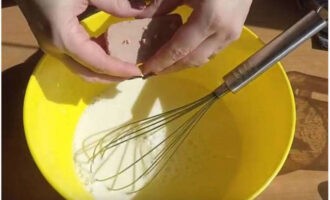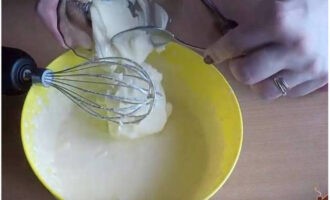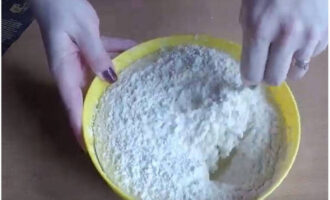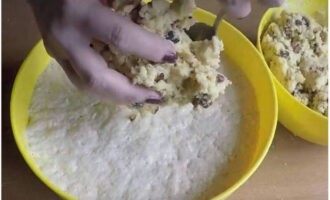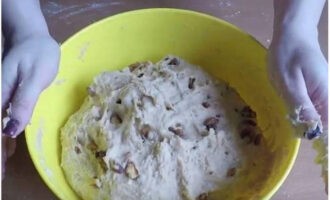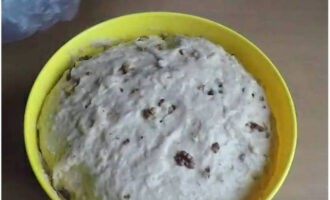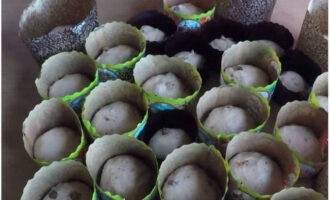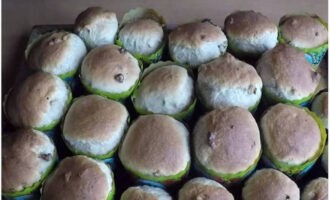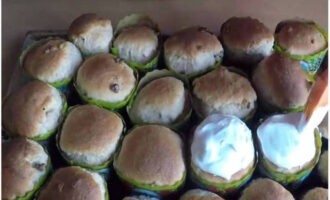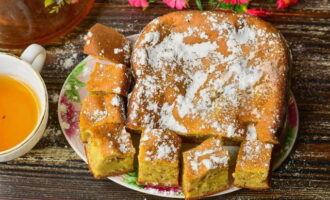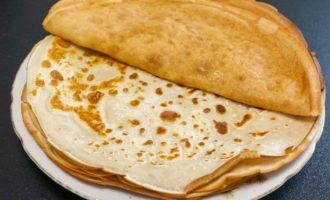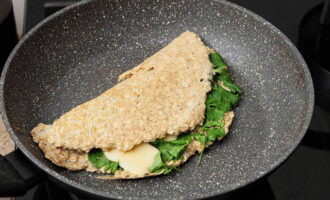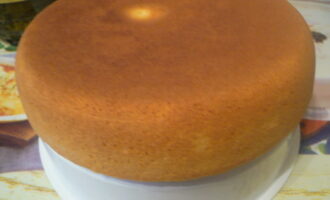Easter cake with live yeast is the most delicious option for preparing traditional Easter cake for the Easter table, because live yeast makes the dough fluffy and soft. The dough is mixed with milk or sour cream, and the remaining ingredients (eggs, butter, nuts and dried fruits) are added according to the chosen recipe, but they all must be fresh and of high quality.
Classic Easter cake made with live yeast in the oven
A classic Easter cake made with live yeast involves kneading the dough with milk, yolks, and butter. Cognac is added to the dough, and the baked goods are supplemented with nuts or dried fruits. And in this recipe, we knead the dough with our hands, using a sponge method, and let the dough rise three times for 50 minutes.

- Flour 1 (kilograms)
- Fresh yeast 70 (grams)
- Cow's milk 500 (milliliters)
- Yolks 8 (things)
- Butter 250 (grams)
- Granulated sugar 1 (glasses)
- Salt 1 (teaspoons)
- Cognac 1 (tablespoons)
- Vanillin 4 (grams)
- Nuts 1 (glasses)
- Vegetable oil for lubrication
- For the glaze:
- Squirrels 3 (things)
- Powdered sugar 1 (glasses)
- Lemon juice 2 (teaspoons)
-
Easter cake made with live yeast is quite easy to prepare.Pour heated milk into the bowl for kneading dough. Add a tablespoon of sugar, crumble the live yeast and use a whisk to mix everything well.
-
Sift all the flour several times onto a thick sieve. Pour half of it into the milk-yeast mixture, stir until smooth and, covered with a napkin, place in a warm, draft-free place to rise for 50 minutes.
-
Carefully separate the eggs into yolks and whites. Leave three whites for glaze. Place the yolks in a separate bowl, add sugar and salt and beat with a mixer into a white mass.
-
Then add a spoonful of cognac, vanillin and softened butter in any way to the yolk mass and mix.
-
Pour the rest of the flour into this rich mass and mix again. Add nuts/dried fruits to it and stir one last time.
-
Transfer the prepared butter mixture into the risen dough.
-
Using your hands, knead the Easter cake dough for 20 minutes until the texture is smooth, homogeneous and does not stick to your palms.
-
Cover the kneaded dough with a napkin and place in a warm place for 50 minutes for the first rise. Knead the dough and leave for another 50 minutes for a second rise. Do the same for the third time.
-
Prepare paper molds for baking Easter cakes and grease them with vegetable oil. After the third rise, knead the dough and place it in the molds, filling them only 1/3 full. Leave the cakes for another 40 minutes to proof.
-
Turn on the oven at 180 degrees. Bake the cakes for 30-40 minutes.
-
Prepare glaze from the ingredients indicated in the recipe. Apply it with a cap onto the baked Easter cakes and cool completely.
-
Easter cakes prepared in the oven according to the classic recipe with live yeast can be decorated with any sprinkles and served at the Easter table.Delicious and successful baking!
Easter cake made with live yeast and sour cream
A good option for kneading dough for Easter cakes would be to cook it with live yeast and sour cream, which will make the baked goods more aromatic, juicy and rich in taste. These cakes stay fresh for several days. In this recipe, we will knead the dough with milk, the dough with sour cream, eggs and butter, and add raisins and orange to the taste.
Cooking time: 3 hours 30 minutes.
Cooking time: 40 minutes.
Servings: 10.
Ingredients:
- Flour – 1.5 kg.
- Egg C1 – 7 pcs.
- Live yeast – 75 gr.
- Milk – 500 ml.
- Soft butter – 250 gr.
- Sugar – 300 gr.
- Sour cream – 500 gr.
- Salt – 1 tsp.
- Cognac – 1 tbsp.
- Vanilla sugar – 3 sachets.
- Raisins – 300 gr.
- Orange – 1 pc.
Cooking process:
Step 1. For the dough, pour heated milk into a separate bowl and crumble live yeast into it.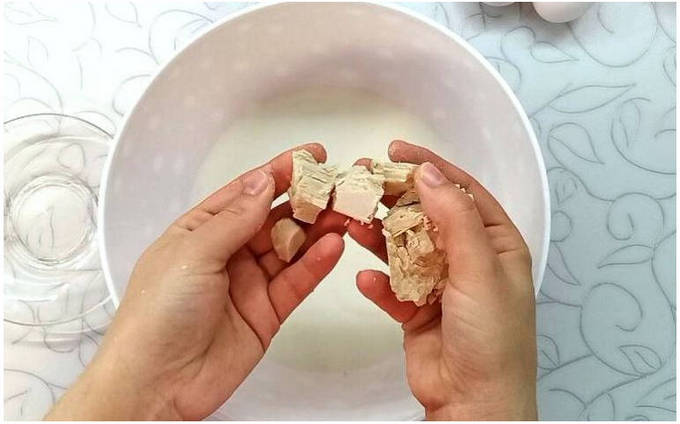
Step 2. Pour two tablespoons of sugar, two tablespoons of flour, mix with a whisk and leave the dough in a warm place for 15 minutes so that the yeast begins to “work” and form a foamy cap on the surface.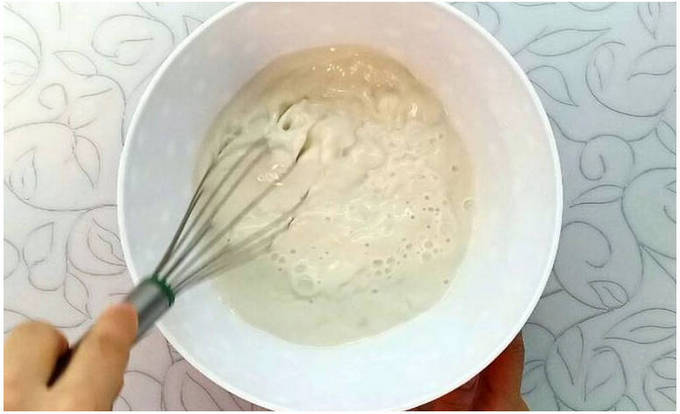
Step 3. Rinse the raisins and orange. Using a fine grater, carefully remove the zest from the orange.
Step 4. Place the washed raisins in a bowl, pour in orange juice, add zest, stir and leave to soak.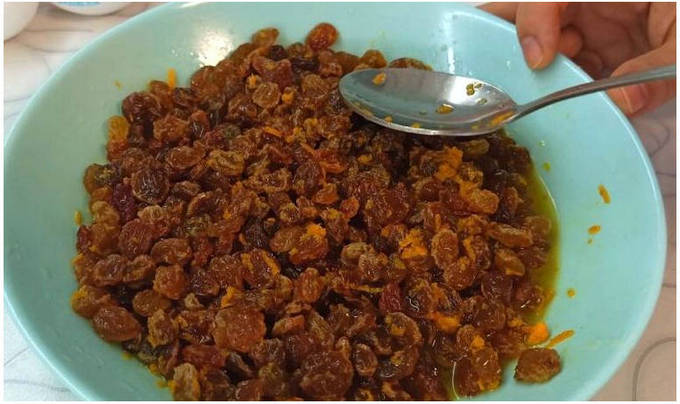
Step 5. Break chicken eggs into a large bowl for kneading dough, pour two types of sugar with ½ teaspoon of salt. Simply whisk these ingredients together until smooth and without beating.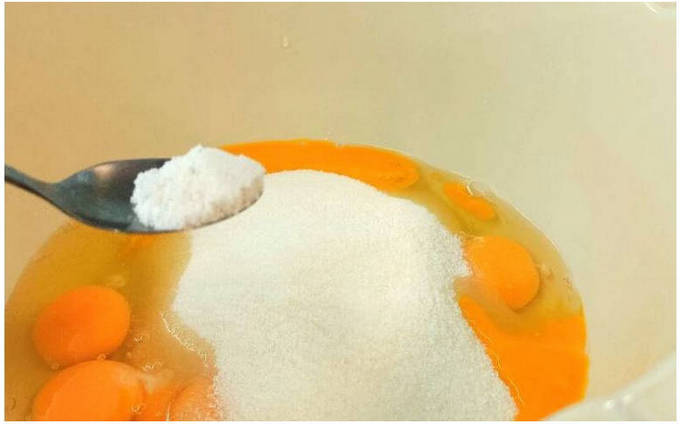
Step 6. Add sour cream with softened butter to the egg mixture, pour over the mixture and mix again.
Step 7. Sift the flour into a sieve. Pour it portionwise into the liquid base and knead first with a spatula and then with your hands until the dough is soft and homogeneous.The dough should not be tight, otherwise the baked goods will be hard.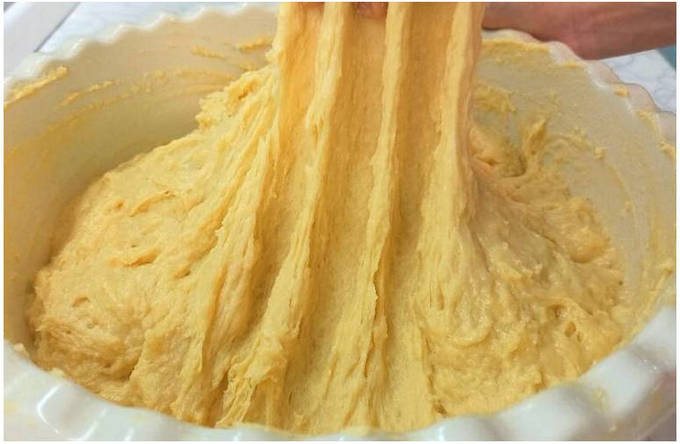
Step 8. When the dough has absorbed all the flour, continue kneading for another 10 minutes so that the gluten develops. The kneaded dough will still stick to your palms, so you can grease them with vegetable oil.

Step 9. Cover the bowl with the dough with a napkin or film and put it in a warm place for 40 minutes, or in another bowl with warm water. With live yeast, the dough will double in volume during this time.
Step 10. Then stir in the soaked raisins into the risen dough, which will also knead them.
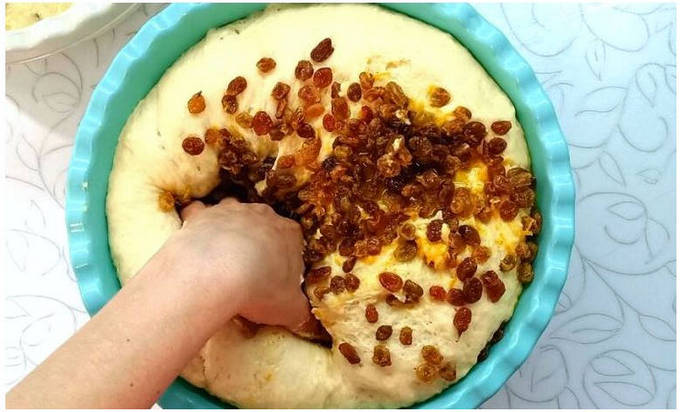
Step 11. Re-cover the raisin dough and leave in a warm place for a second rise for 40 minutes.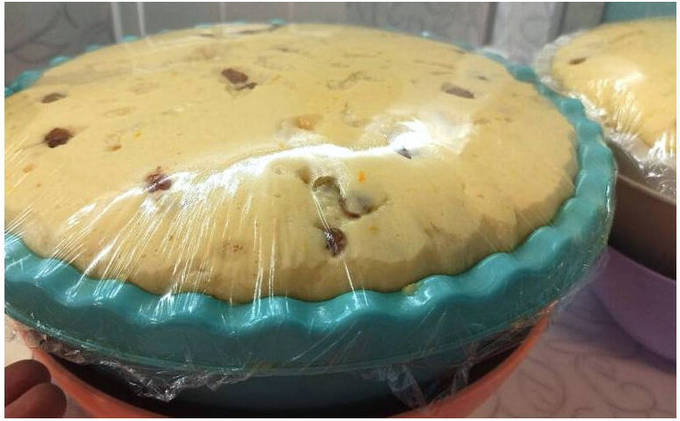
Step 12. Knead the risen dough a second time and place it in prepared cake pans, filling them only 1/3 full.
Step 13. Give the dough in the molds 30 minutes to proof. Turn on the oven at 180°C.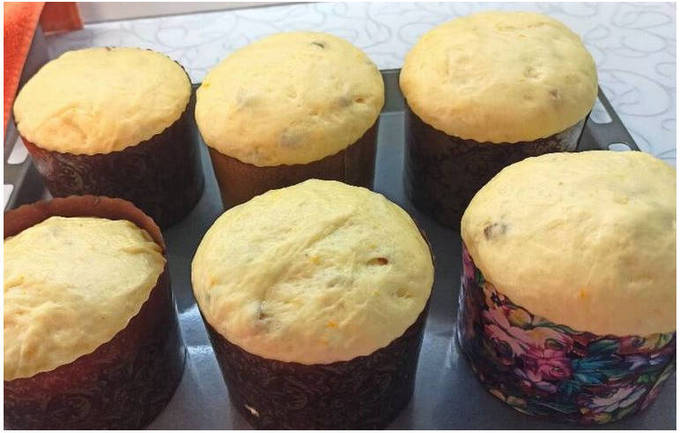
Step 14. Bake Easter cakes with live yeast and sour cream for 40 minutes, checking for doneness with a wooden skewer. Decorate the prepared soft porous Easter cakes with any glaze with sprinkles and, after cooling, serve for the holiday table. Delicious and successful baking!
Easter cake with milk and fresh yeast
Kulich made with milk and fresh yeast is recognized by many housewives as the most delicious baked goods for the Easter table, although it requires time and labor. In this recipe, we mix the dough for Easter cake using a sponge method, using yolks with butter, adding traditional raisins and dried apricots and decorating with egg white glaze.
Cooking time: 4 hours.
Cooking time: 40 minutes.
Servings: 6.
Ingredients:
For the dough:
- Flour – 160 gr.
- Milk – 250 ml.
- Sugar – 3 tsp.
- Fresh yeast – 30 gr.
For the test:
- Egg – 3 pcs.
- Yolk – 3 pcs.
- Flour – 600-700 gr.
- Butter – 100 gr.
- Sugar – 200 gr.
- Salt – 1/3 tsp.
- Raisins and dried apricots – 150 gr.
- Orange (zest) – 1 pc.
For the glaze:
- Protein – 3 pcs.
- Sugar – 150 gr.
Cooking process:
Step 1. Soak dried fruits in cognac or rum a day before baking Easter cakes to maximize their flavor. Then dry them with a napkin.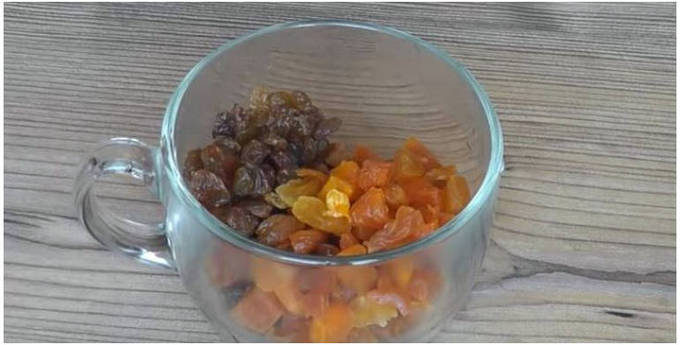
Step 2. Pour milk heated to 40 degrees into the sponge bowl, crumble fresh yeast, add sugar and flour and mix.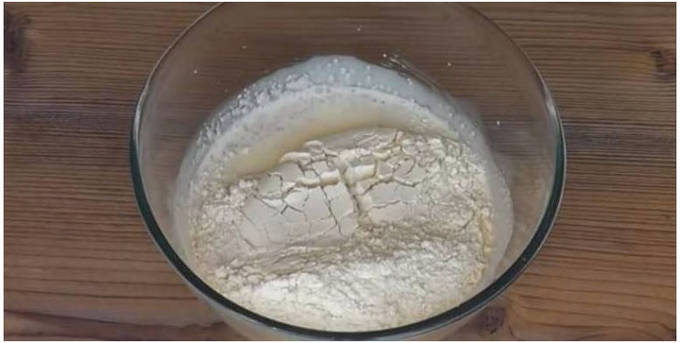
Step 3. Cover the dish with a napkin or film, pierce it and place it in any warm place for 40 minutes to rise.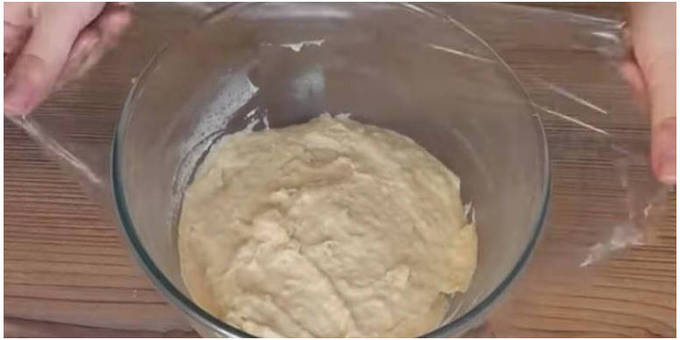
Step 4. During this time, the dough will double in volume.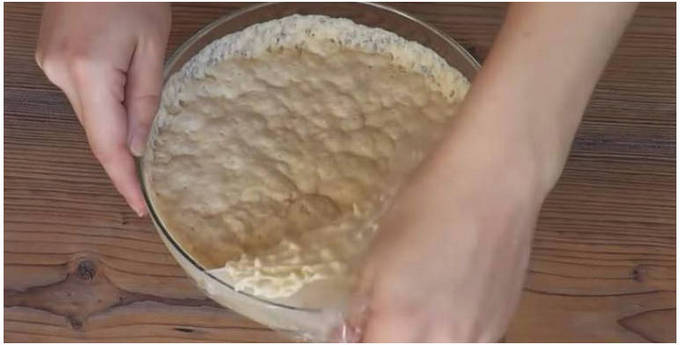
Step 5. Break three chicken eggs into a bowl for kneading dough, add three yolks, and leave the whites for glaze. Add sugar and salt to the eggs and beat with a mixer until fluffy.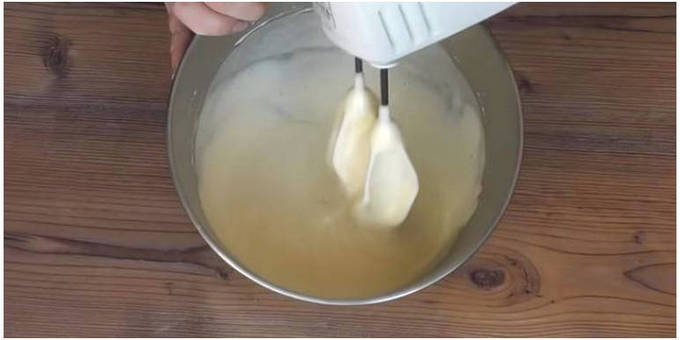
Step 6. Add the mixture to the beaten eggs and mix everything well with a spatula.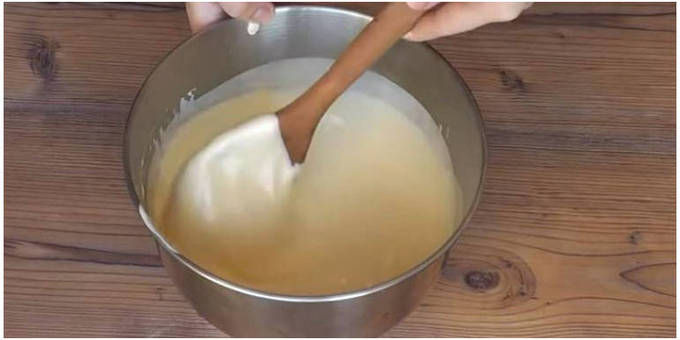
Step 7. Sift the flour into a sieve 2-3 times, pour it portionwise into the liquid dough base and mix everything with a spatula after each portion.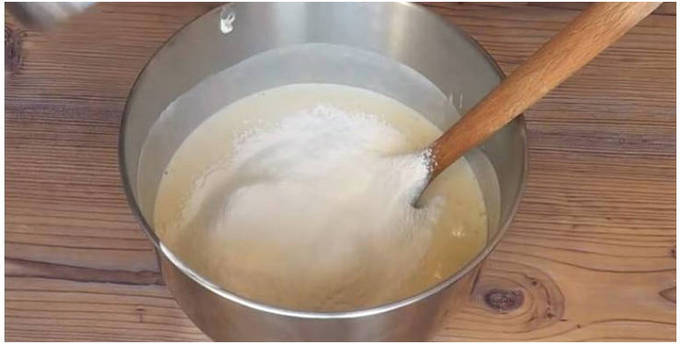
Step 8. Then transfer the dough to a floured countertop, add the rest of the flour and knead the dough with your hands for 15 minutes until smooth and homogeneous.
Step 9. Stir butter, softened at room temperature, into this dough.
Step 10. Grease a deep bowl with vegetable oil, transfer the kneaded dough into it, cover with a napkin and place in a warm place for a couple of hours.
Step 11. The dough should increase in volume by 2-2.5 times.
Step 12. Knead the dough, transfer it to the countertop and evenly stir in the prepared dried fruits.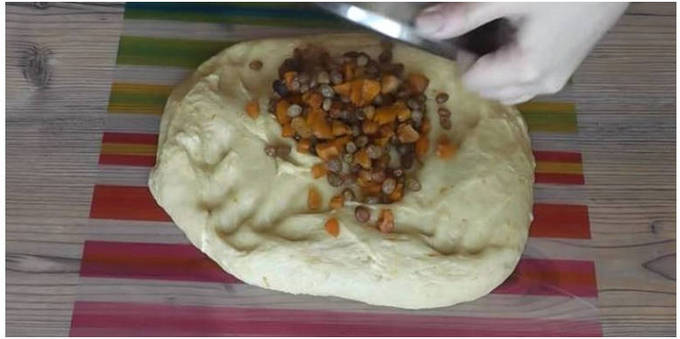
Step 13. Prepare the cake pans. Spread the kneaded dough over them, filling only 1/3 of the volume.Leave the dough in the molds for 40 minutes to proof.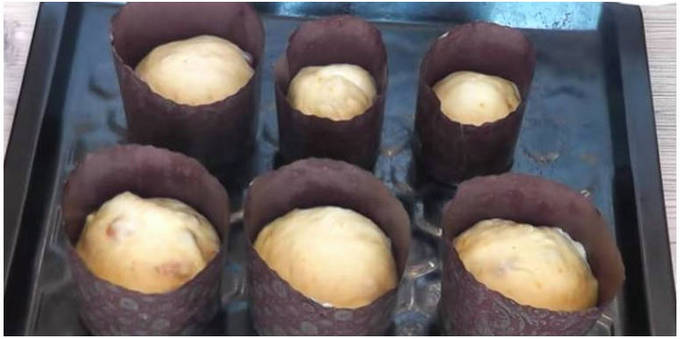
Step 14. Turn on the oven at 180°C. Bake the cakes for 30-50 minutes.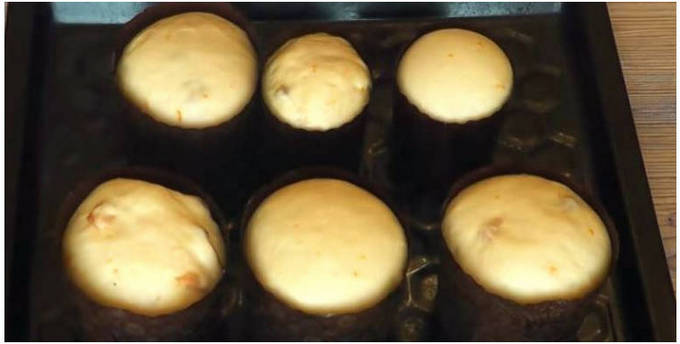
Step 15. Using a wooden skewer, check the baked goods for doneness.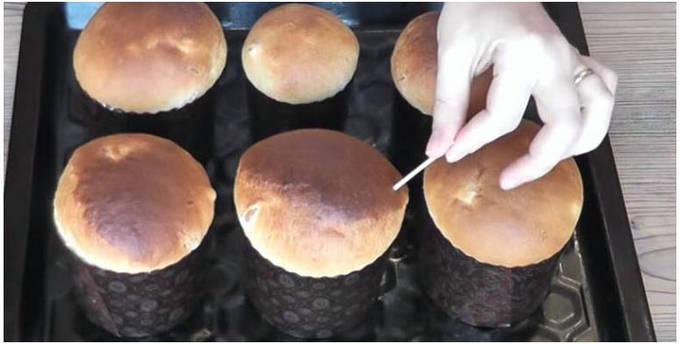
Step 16. To prepare the glaze, place a separate bowl in a water bath and place three egg whites with sugar in it.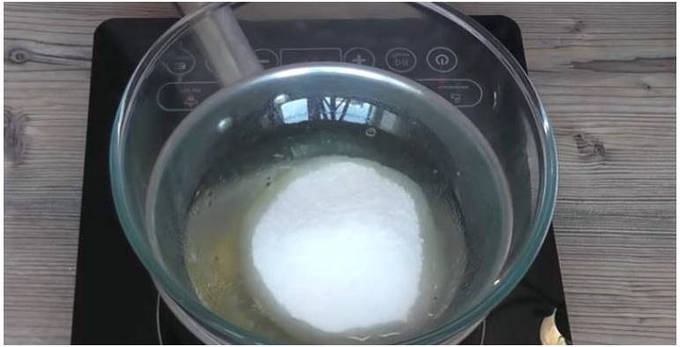
Step 17. Using a mixer on low heat, beat these ingredients into a fluffy mass.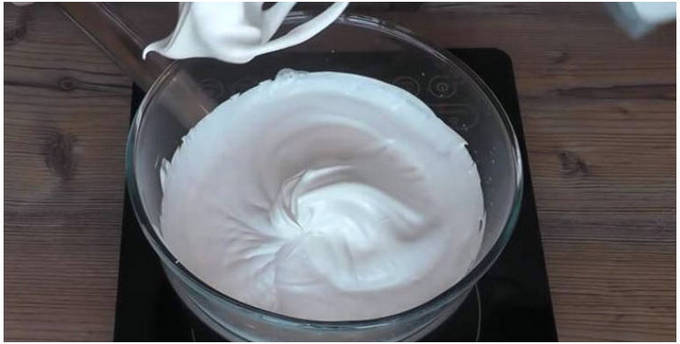
Step 18. Remove the baked Easter cakes with milk and fresh yeast from the molds, cool and cover evenly with glaze.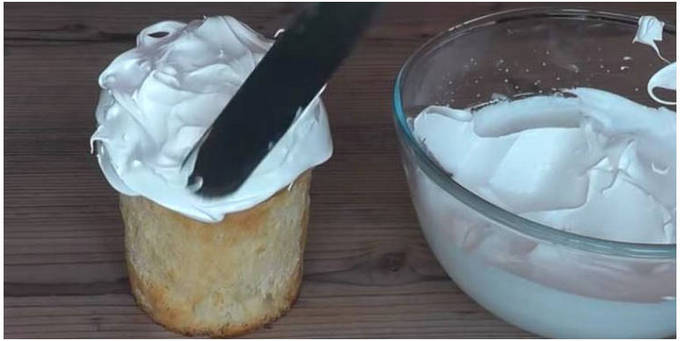
Step 19. Using the flame of a lighter or gas burner, beautifully flambe the surface of the glaze. Additionally, decorate the cakes with craft paper and twine and you can treat everyone with these baked goods on the holiday. Bon appetit!
Easter cake with live yeast in a bread machine
A bread maker of any model significantly reduces the housewife’s culinary efforts when baking Easter cake, but most recipes involve the use of dry yeast, but in this recipe we use live yeast, which will turn out much tastier. Knead the dough with milk, eggs and butter. Place live yeast directly into the gadget’s bucket. We will complement the taste of the cake with raisins and spices. The recipe is the simplest.
Cooking time: 3 hours 30 minutes.
Cooking time: 10 minutes.
Servings: 800 gr.
Ingredients:
- Flour – 500 gr.
- Egg – 4 pcs.
- Milk – 100 ml.
- Butter – 100 gr.
- Live yeast – 20 gr.
- Sugar – 1 tbsp.
- Salt – 1/2 tsp.
- Raisins – 100 gr.
- Vanillin – 2 gr.
- Cinnamon - to taste.
Cooking process:
Step 1. Divide the eggs into whites and yolks and place in different containers. Grind the yolks with sugar, and beat the whites with a mixer until stiff peaks form.
Step 2. Prepare the bread maker. Place the liquid ingredients in the bucket first.Pour milk heated to 40-50 degrees. Transfer the egg white and yolk mixtures. Add butter softened at room temperature.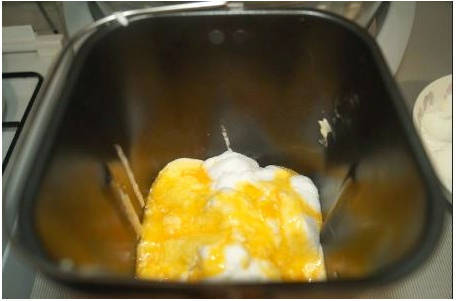
Step 3. Sift the flour into a sieve a couple of times and pour into a bucket. Add seasoned salt. Make a well in the middle of the flour and crumble the live yeast into it.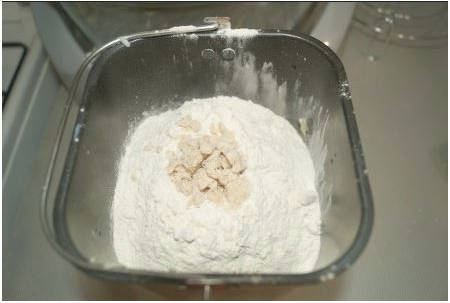
Step 4. Place the bucket in the bread maker and close the lid. Turn on the “French bread” program, cooking time – 3 hours 20 minutes, crust color – light. Rinse the raisins and place them in a dispenser.
Step 5. After the signal about the end of the program, remove the Easter cake baked in a bread machine with live yeast from the bucket, cool and decorate with any glaze and sprinkles. Happy and delicious baking!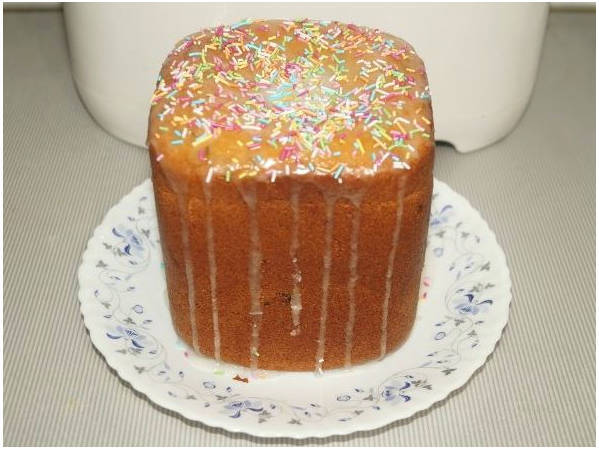
Easter cake with fresh yeast and raisins
The version of making Easter cake with fresh yeast with raisins is considered the simplest and belongs to the good old classics. The dough for Easter cake is kneaded on a baking sheet, it turns out to be quite heavy and therefore fresh yeast is better suited to it. Raisins can be soaked in rum or cognac in advance.
Cooking time: 6 hours.
Cooking time: 40 minutes.
Servings: 10.
Ingredients:
For the dough:
- Fresh yeast – 50 gr.
- Milk – ½ tbsp.
- Flour – 1 tbsp.
- Sugar – 1 tsp.
For the test:
- Yolks – 8 pcs.
- Egg – 2 pcs.
- Flour – 950 gr.
- Butter – 200 gr.
- Sour cream – 200 gr.
- Sugar – 1 tbsp.
- Raisins – 2 handfuls.
- Vegetable oil – 4 tbsp.
- Salt – ¼ tsp.
For fondant:
- Egg white – 2 pcs.
- Powdered sugar – 150 gr.
- Confectionery sprinkles – 50 gr.
Cooking process:
Step 1. Pour a little warmed milk into a deep bowl, add flour and sugar and crumble fresh yeast.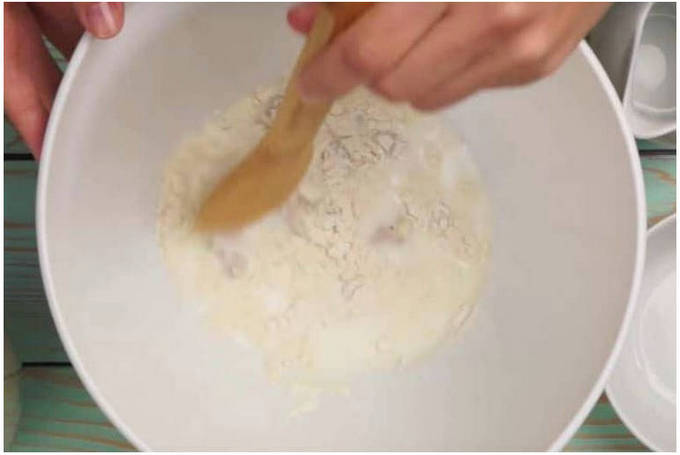
Step 2. Using a spatula, mix these ingredients well.Cover the dish with a napkin and place it in any warm place for half an hour so that the yeast begins to “work” and doubles the volume of the dough.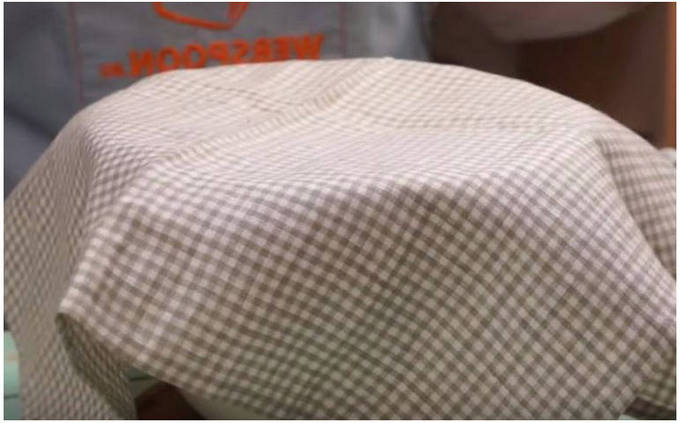
Step 3. Carefully separate the eggs into whites and yolks and place the latter in a separate bowl, add two eggs to them and mix well with a whisk.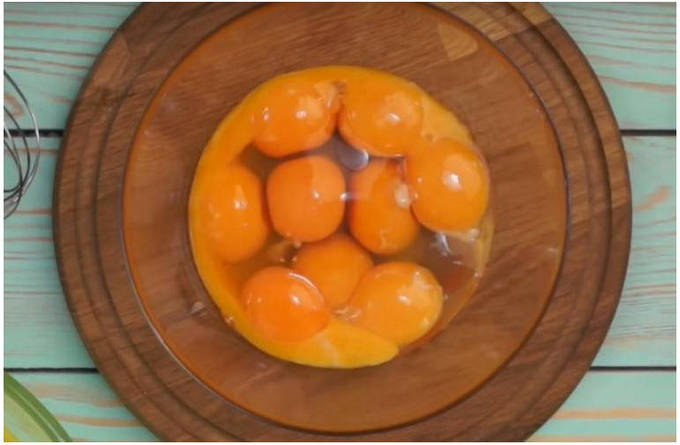
Step 4. Transfer the yolk mixture into the suitable dough, add sour cream and add sugar.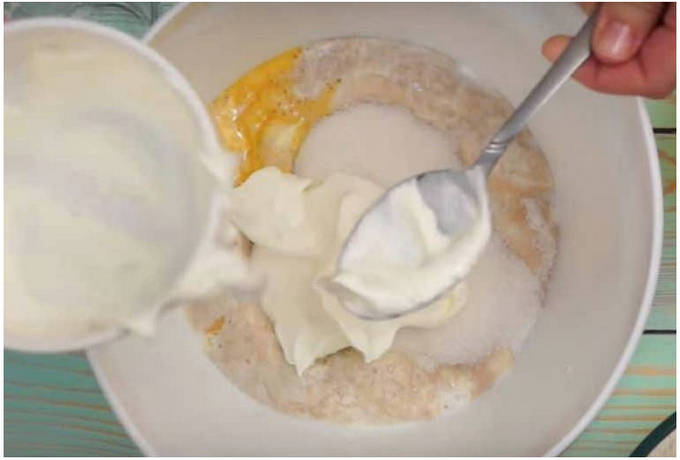
Step 5. Sift the flour into a sieve. 600 gr. Pour the sifted flour into the liquid ingredients in portions and at the same time knead the dough with a spatula until it has a smooth and uniform texture. Then cover the dough with a napkin and place it in the same warm place for 2 hours until its volume doubles.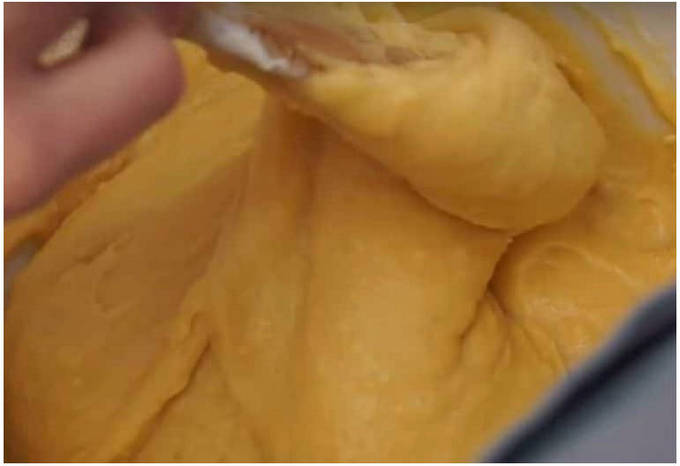
Step 6. After this time, knead the dough, add the prepared raisins and the rest of the flour.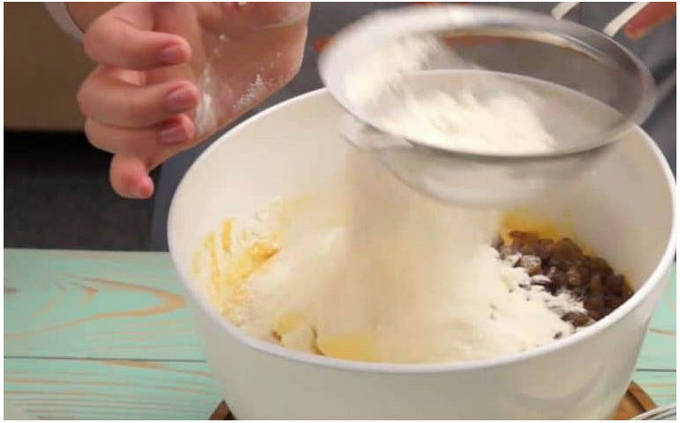
Step 7. Knead the dough with your hands and leave in a warm place for another 1.5 hours until it doubles in volume.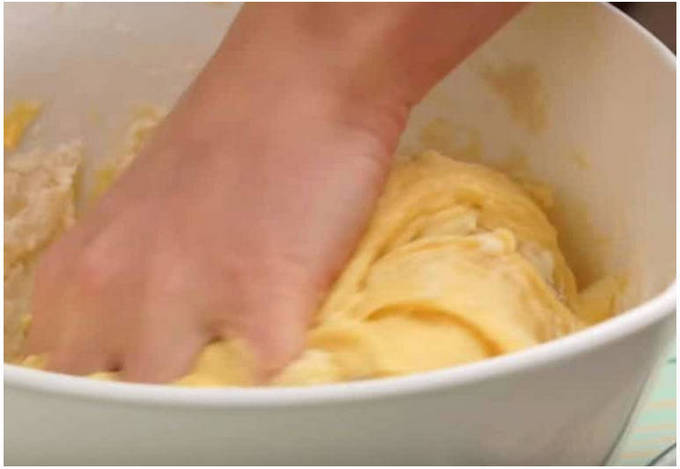
Step 8. After the second rise, knead the dough again and place it in Easter cake molds, filling them 1/3 full. Leave the dough in the molds for 15 minutes to proof. Turn on the oven at 180 degrees. Bake the cakes for 1 hour, which also depends on the size of the molds.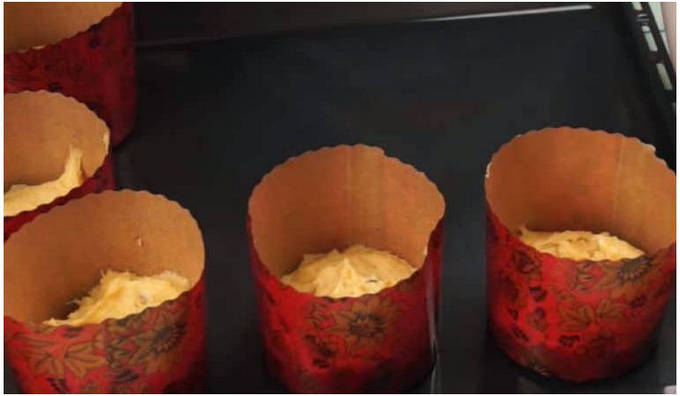
Step 9. In a separate bowl, beat the whites into a stable mass and mix them, without stopping beating, with powdered sugar.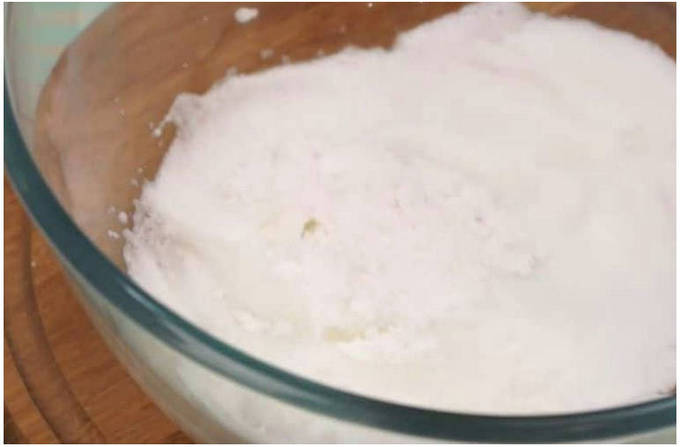
Step 10. Remove the baked Easter cakes with raisins from the molds, evenly grease with the prepared glaze, decorate with sprinkles and, after completely cooling, serve for the holiday table. Delicious and successful baking!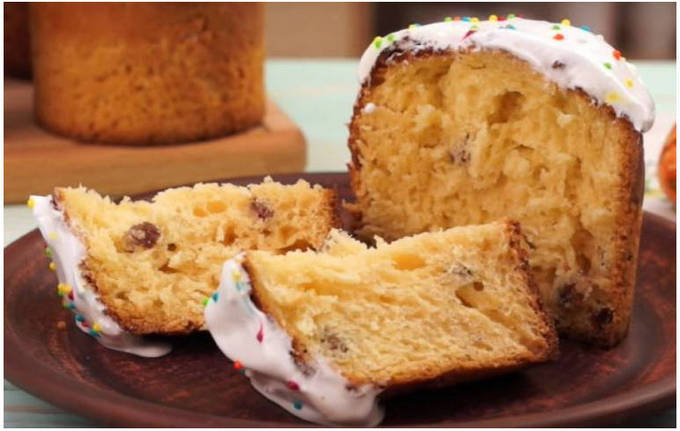
Easter cake made with live yeast and cognac
Easter cake made with live yeast and cognac has an interesting and unusual taste and is often called “Tsarsky”. Cognac is either added to the dough or raisins are soaked in it.In this recipe, mix the dough in a sponge manner using fresh yeast, milk, eggs and butter, and pour cognac over the raisins for 15 minutes. The proportion of ingredients in this recipe is designed for a soft dough and it will rise quickly with live yeast.
Cooking time: 1 hour 50 minutes.
Cooking time: 10 minutes.
Servings: 2.
Ingredients:
- Flour – 500-550 gr.
- Fresh yeast – 20 gr.
- Milk – 150 ml.
- Egg – 2 pcs.
- Sugar – 150 gr.
- Butter – 70 gr.
- Cognac – 1 tbsp.
- Raisins – 40 gr.
- Vanilla sugar – 1 tsp.
- Salt – 1 pinch.
Cooking process:
Step 1. First of all, measure out all the ingredients for the cognac cake according to the recipe proportions.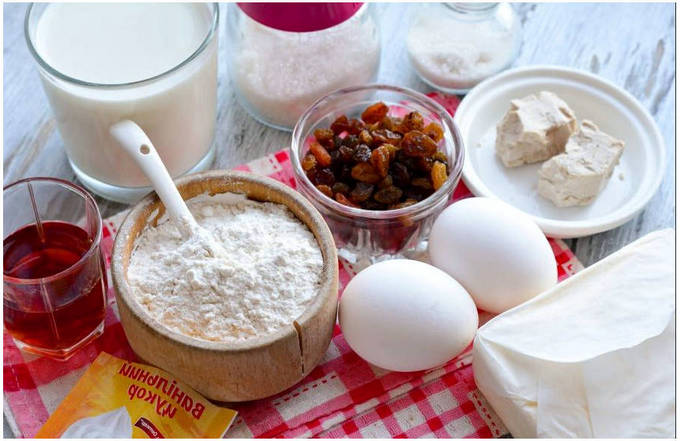
Step 2. Pour a little warmed milk into the bowl for kneading the dough and crumble the fresh yeast, which will be the dough dough.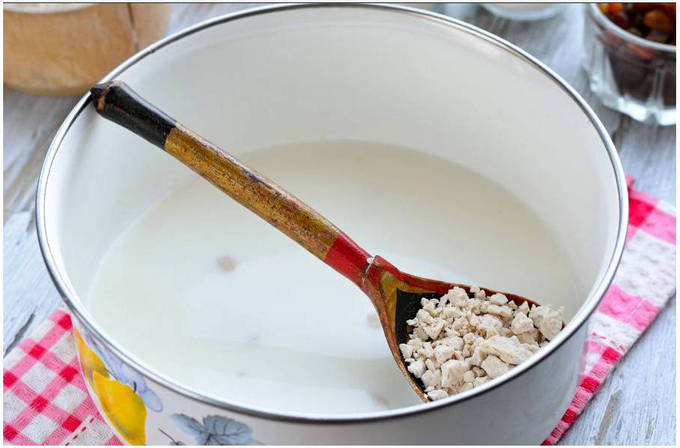
Step 3. Pour one spoon of sugar into the dough.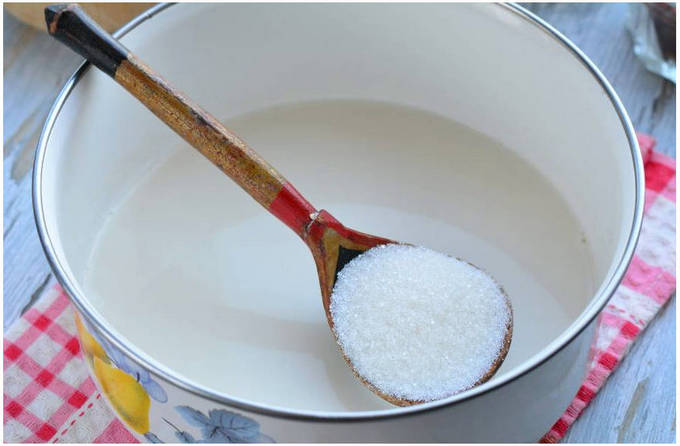
Step 4. Add a spoonful of flour.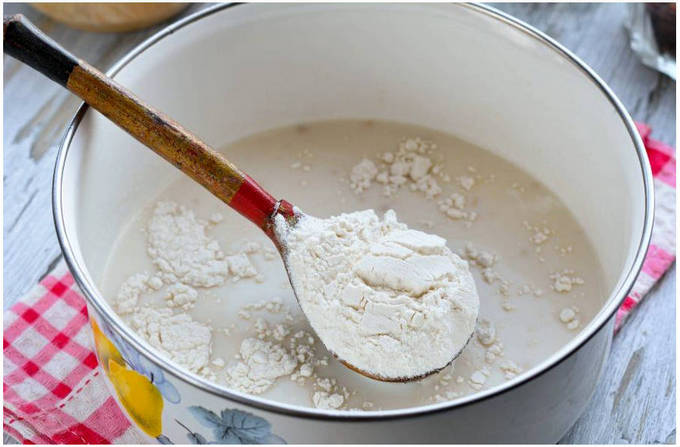
Step 5. Mix these ingredients well. Cover the dish with a napkin and place the dough in a warm place for 20 minutes.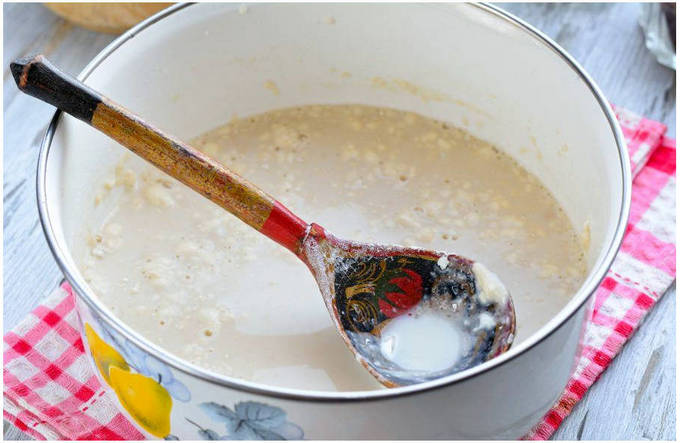
Step 6. While the dough is rising, break two eggs into another bowl, add the rest of the sugar and whisk them until white.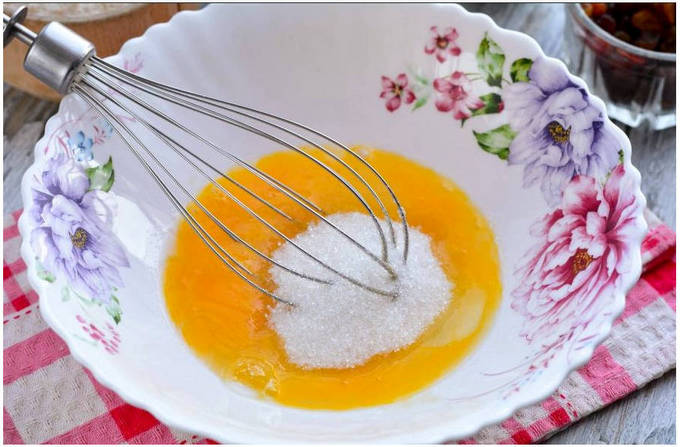
Step 7. Melt the butter in the microwave, cool slightly, pour into the egg mixture and stir.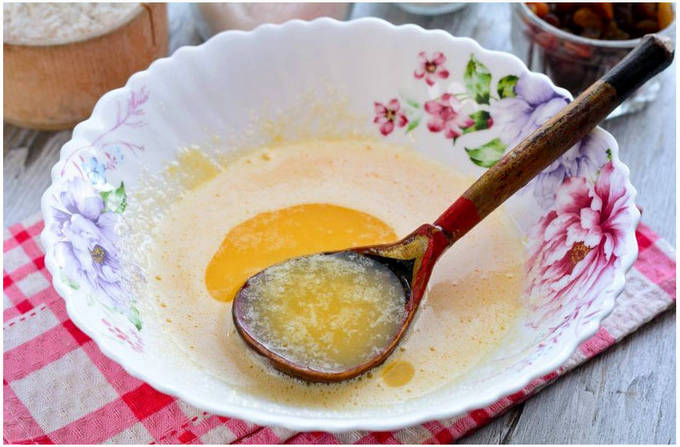
Step 8. In 20 minutes the dough will increase in volume and become fluffy.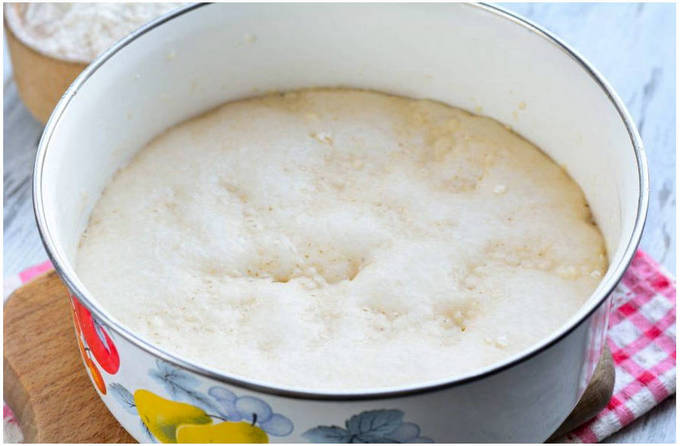
Step 9. Pour the egg-oil mixture into it and mix well.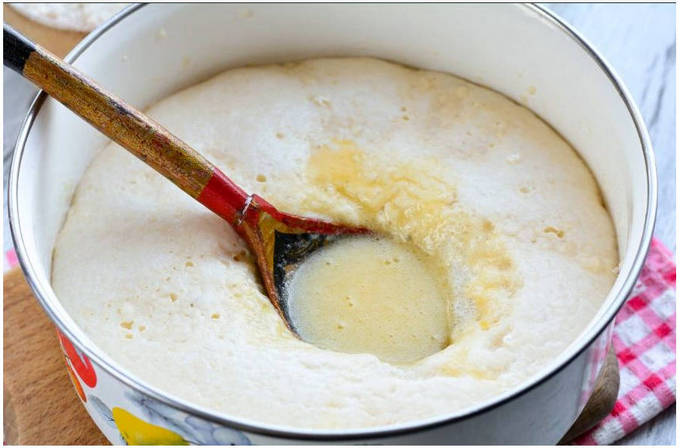
Step 10. Rinse the raisins, pour cognac for 15 minutes, transfer to the dough and mix again.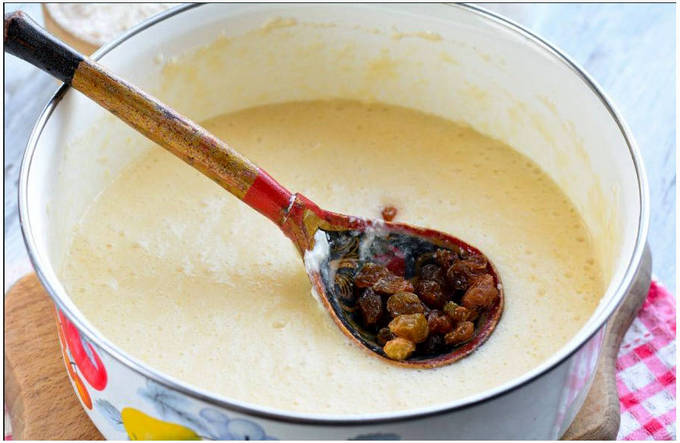
Step 11. Then add the rest of the flour to this mixture, preferably sifted on a sieve.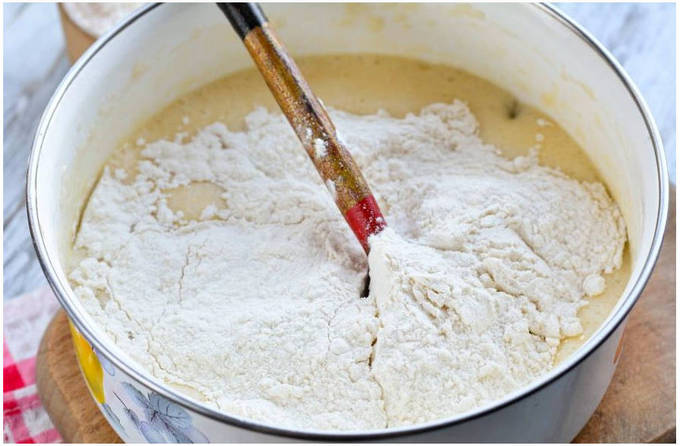
Step 12: Use a spoon to knead the soft dough until it has a smooth and uniform texture. Cover the dishes with a towel and place in a warm place for 40 minutes.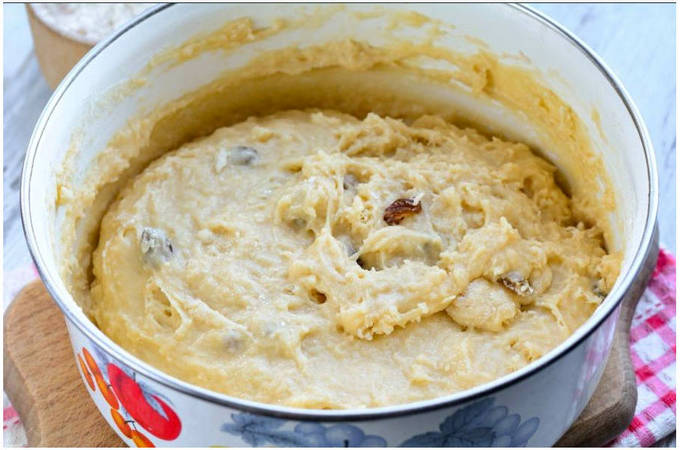
Step 13. During this time, the soft and light dough will rise well and increase in volume by 2-3 times.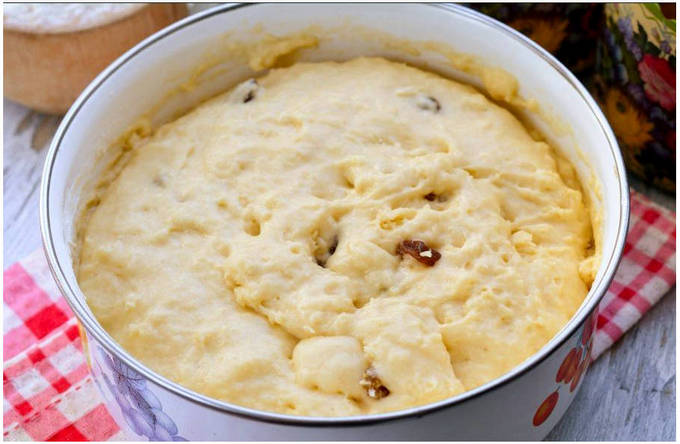
Step 14Punch down the risen dough and transfer it to paper molds of any size. From this volume of dough you can have two molds with a volume of 300 g each.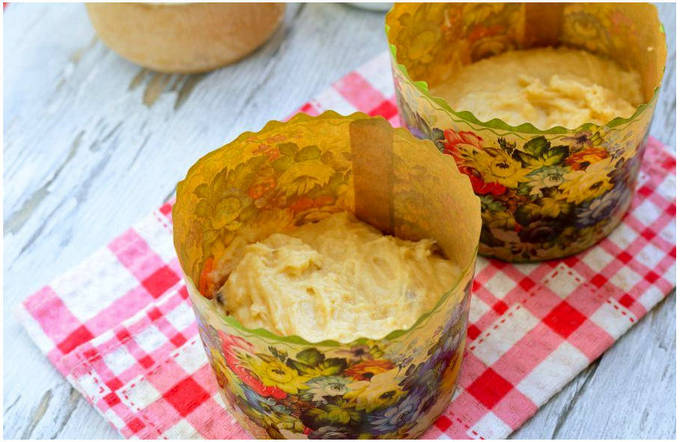
Step 15. Turn on the oven at 180 degrees. Bake the cakes for 35-40 minutes.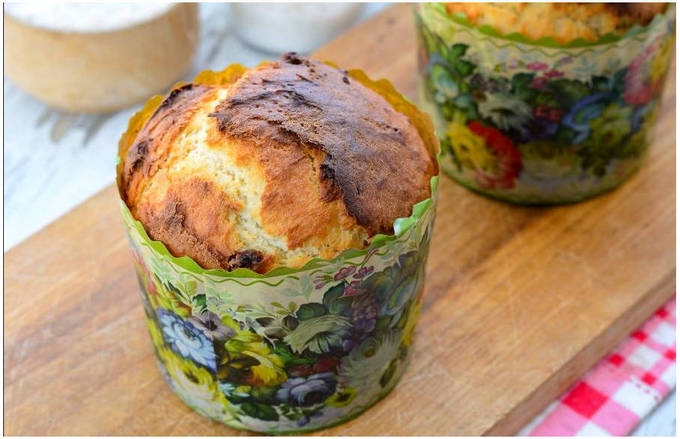
Step 16. Remove the baked Easter cakes with live yeast and cognac from the molds, cool, decorate to your liking with icing and sprinkles and serve to the festive table. Happy and delicious baking!


